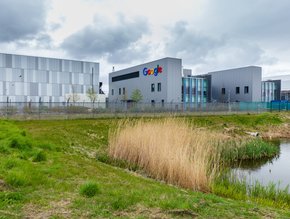Leading Edge DC opens US$7.7mn edge data centre in Dubbo

Leading Edge Data Centres (LEDC), a pioneering provider of Tier III Edge regional data centres, has announced the opening of its third regional facility.
LEDC’s Dubbo data centre will serve as its third investment in Australia, following the Newcastle and Tamworth data centres built earlier in 2021. So far, LEDC has invested and committed close to US$30mn in the development of edge data centres. The investment in the first edge data centre in Dubbo is US$7.7mn in FY21 and FY22.
Dubbo’s economy and the impacts of LEDC’s data centre on the city
Dubbo is a leading regional centre in Australia, with a population growing at 1.3% per annum, 23,000 regional jobs, and an annual economic output of US$7.2bn. Located approximately 400km northwest of Sydney, the local economy is heavily driven by the construction, health care and social assistance sectors, whilst the region’s agricultural and mining sectors are growing. Dubbo has long suffered from poor connectivity and low resilience due to reliance on Sydney-based data centres, coupled with regular power and network outages.
Social Ventures Australia, a consulting practice that specialises in social change, recently completed analysis on the long-term, annualised economic, social and environmental impacts of LEDC’s data centre in Dubbo, indicating:
• 621 new jobs forecasted
• US$57mn per year in contribution to the Dubbo Economy
• US$457,000 of benefits through averted carbon dioxide emissions by 4,500tCO2e
• US$30mn of benefit to businesses, through decreased network costs, reduction of network outages and increased productivity
• US$20mn of benefit (increasing year-on-year) to businesses through unlocking new business opportunities
This model will be replicated across all of its 26 regional data centre sites, LEDC said.
On Friday, 10 December, the new data centre was opened in a ribbon-cutting ceremony with Member for the Dubbo electorate, Dugald Saunders and CEO of Dubbo Regional Council Murray Wood. Mr Saunders said that the data centre will provide new opportunities across Western NSW.
“Local Dubbo businesses will be able to access advanced digital infrastructure in a secure facility, with better connectivity and choice of provider. The benefits for Dubbo are far-reaching as there will be new jobs and local economic growth which will positively impact the entire Orana region.”
LEDC recently opened their Tamworth facility, with Deputy Prime Minister Barnaby Joyce and Senator The Hon Bridget McKenzie Minister for Regional Communications. Deputy Prime Minister Joyce said, “When we look back 10 years to the technology that we had then compared to what we have now, the improvement is astronomical. It’s great to have the cloud here now, providing connectivity improvements for local businesses and regional communities.”
Senator McKenzie said, “Leading Edge Data Centres are as committed to ensuring regional connectivity as the Federal Government. We know that getting businesses and individuals connected in the digital age allows you to compete globally, and now it’s not just capital cities where that happens. This data centre will ensure that local businesses have a secure way to manage their data so that Regional Australia can capitalise on the opportunities the 21st century is going to bring us with digital connectivity.”
Local Dubbo-based IT provider Matt Jauja of Regional IT Australia has been using the Tamworth data centre since opening and has been looking forward to accessing the Dubbo facility. Jauja says, “We have been highly impressed with the service at Tamworth. Our customer’s hosting costs have been reduced by 20% as they can now access managed services, rather than purchasing their own hardware and hosting it in their office. I’ve also been able to offer new services as well as uptime SLAs because their infrastructure is hosted in an always-on stable, secure environment.”
Enterprise Ethernet speeds have also significantly improved. Jauja continues, ”We have measured 50% improvement in latency. Our customers are very impressed with how things have improved since their infrastructure has been moved into the data centre. The Dubbo data centre will change the local digital landscape to compete on a level playing field with metro.”
CEO and Founder of LEDC Chris Thorpe said, “Today marks a huge step forward for Dubbo and Western NSW. We are proud to have created so many regional jobs in the design, fabrication and build of the data centres, but more importantly, 621 new jobs are forecast to be created in the Orana Region and an additional US$57mn into the local economy, empowering the regional companies that are able to compete on an equal footing with metropolitan cities and the world.”
With 26 regional data centres in plan across New South Wales, Victoria and Queensland, LEDC has successfully opened data centres in Newcastle, Tamworth and Dubbo. Other NSW and Victorian locations in the pipeline include Albury, Wagga Wagga, Coffs Harbour, Bathurst, Shepparton, Bendigo, Ballarat, Geelong, Traralgon, Horsham and Mildura.






